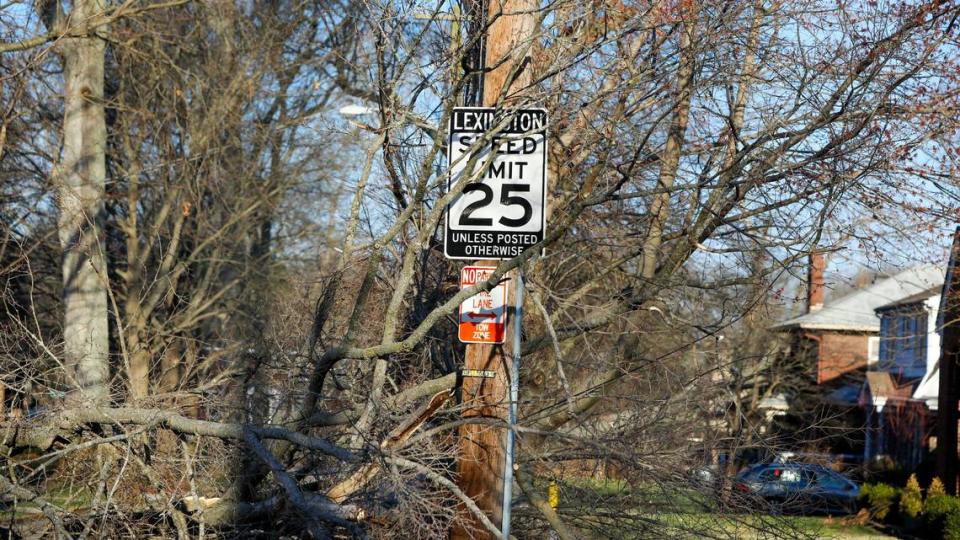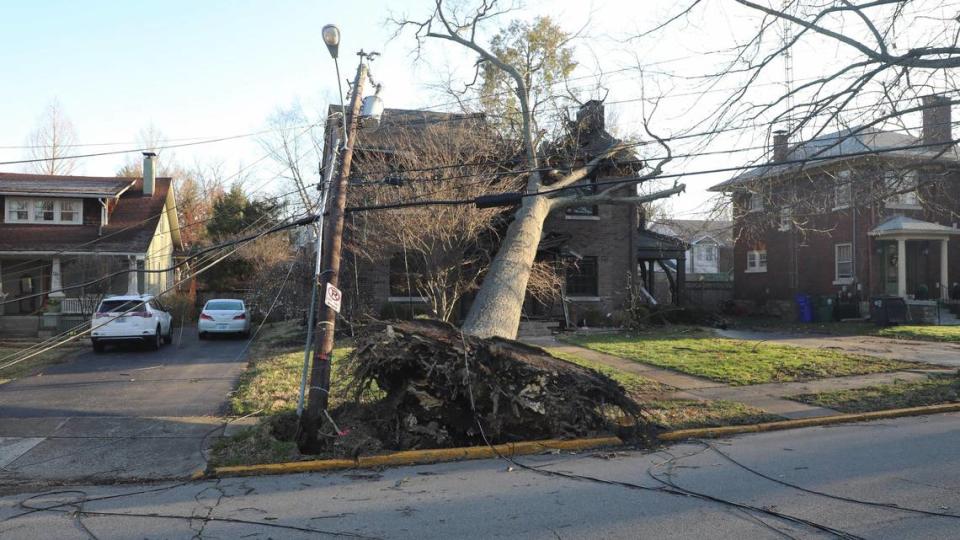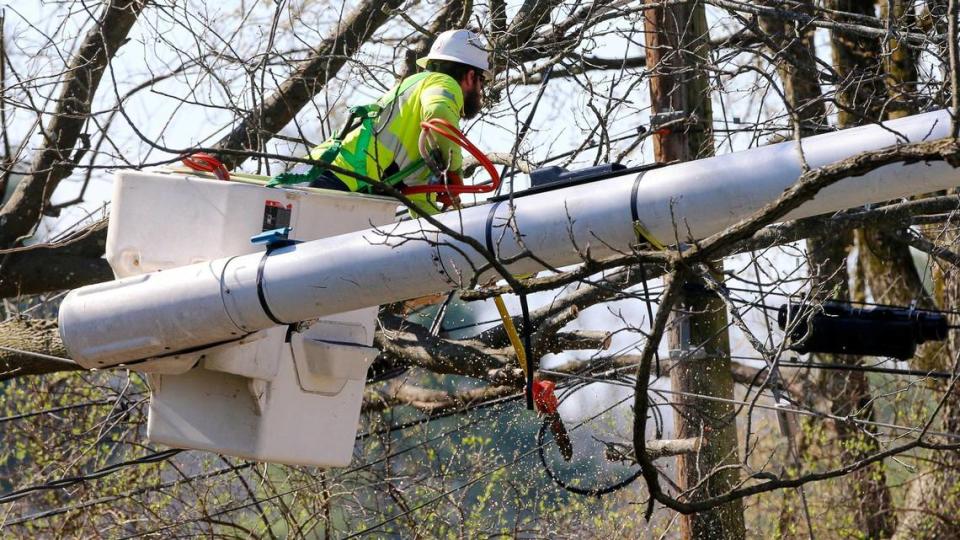Burying power lines could help prevent outages. But KU says it isn’t that simple
When a storm with hurricane force winds ripped through Fayette County on March 3, more than 45,000 Kentucky Utility customers in Fayette County lost power.
Some of those customers were without power for five days.
Similar power outages have occurred during some of Lexington’s fiercest storms.
Yet the majority of Kentucky Utilities power lines — roughly 67% — are above ground across its service area, which includes dozens of counties in Central Kentucky.
Burying power lines can help deter some power outages but not all, KU officials told the Lexington-Fayette Urban County Council’s Environmental Quality and Public Works Committee Tuesday.
“Underground electric systems do still fail, and those outages can potentially last longer than typical overhead power lines,” said Chris Mayes, Lexington operations manager for KU.

Councilwoman Liz Sheehan, chairwoman of the Environmental Quality and Public Works Committee, said she asked KU to come to Tuesday’s meeting after the March storms.
Sheehan said council members received a lot of questions from residents about why more power lines aren’t buried.
Many underground electric systems are fed by above-ground transmission wires. That means strong storms can still knock out power to those large transmission lines, causing outages in areas served by below-ground lines.
Moreover, when there is a problem with underground electrical grids, it can be very disruptive to get to those power lines, disturbing people’s trees and yards, Mayes said.
Underground electric lines also need to be replaced more often than overhead lines, he said.
After a historic ice storm knocked out power to much of Kentucky in 2009, KU and LG&E determined it would cost roughly $40 billion to underground transmission lines and $24 billion for distribution lines, or the lines that feed into homes — for a total of $64 billion, Mayes said. It took nine days for power to be restored after that storm.
It costs roughly $10 million to $15 million per mile to underground a transmission line, Mayes said.

Some power lines are placed underground
That doesn’t mean lines aren’t being place underground.
New development in Fayette County typically has underground power lines. Developers will usually do in-kind work such as digging trenches for those lines, he said.
Mayes said it’s rare that new developments would want overhead lines. Mayes estimates roughly 75% of new development in Fayette County has below-ground power lines.
KU is also looking at some areas that currently have above ground lines — on poles — where it makes more sense to bury power lines, he said.
KU has completed some downtown revitalization-type projects where lines that were once on poles were buried.
Neighborhoods can request to have lines buried, but it comes at a cost. First, KU does an analysis to determine if it’s feasible. If KU gives the green light, the neighborhood must pay for those lines to be placed underground, Mayes said.
“Undergrounding is one tool that we use to improve reliability. It’s rarely the best tool,” Mayes said. Mayes said very few utilities are converting older, overhead lines to underground lines across the country.
If developers dig trenches for new underground lines, Mayes said KU doesn’t charge extra. Replacing overhead lines with underground lines is more expensive. The overhead lines are working, he said.
Councilwoman Jennifer Reynolds said she has had multiple requests from neighborhoods to bury power lines. Reynolds said she has heard entire communities have moved to underground power lines.
“I realize it’s expensive and it can be a pain,” Reynolds said. Reynolds said she would be interested in looking at incentives or an ordinance requiring all new developments to have buried power lines.
David Barberie, a lawyer for the city, said that it was something the city could explore.


